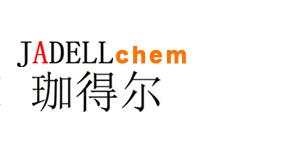Recombinant Rat Macrophage-Colony Stimulating Factor (CHO-expressed)是一种促炎细胞因子,其与其受体CSF1R结合,参与单核细胞/巨噬细胞谱系细胞的发育和增殖,并参与破骨细胞的诱导。
Synonyms
rRtM-CSF; CSF1; MCSF ; 重组大鼠巨噬细胞集落刺激因子 (CHO表达)
Species
RatSource
CHO Accession
Q8JZQ0 Gene ID
78965 Molecular Weight
32-40 kDa AA Sequence
EVSEHCSHMI GNGHLQILQQ LIDSQMETAC LIEYKFVDQE QLDDPVCYLK KAFVLVQVII EETMRFKDNT PNANATERLQ ELSMKLNSCF IKDYKEQNEA CVQTYKESPL RLLEKIKNFF NETKNFLEKD WNIFSKNCND SFAKCSSRDV VTKP Biological Activity
The ED50 is <2.5 ng/mL as measured by murine M-NFS-60 cells, corresponding to a specific activity of >4.0 × 105 units/mg. Appearance
Lyophilized powder. Formulation
Lyophilized after extensive dialysis against PBS. Endotoxin Level
<0.2 EU/μg, determined by LAL method. Reconstitution
Reconstitute the lyophilized recombinant Rat Macrophage-Colony Stimulating Factor (CHO-expressed) (rRtM-CSF) to 100 μg/mL using ddH2O or PBS. Storage & Stability
Lyophilized recombinant Rat Macrophage-Colony Stimulating Factor (CHO-expressed) (rRtM-CSF) is stored at -20°C. After reconstitution, it is stable at 4°C for 1 week or -20°C for longer. It is recommended to freeze aliquots at -20°C or -80°C for extended storage. Shipping
Room temperature in continental US; may vary elsewhere. Background
Macrophage Colony Stimulating Factor (M-CSF) is a pro-inflammatory cytokine, constitutively produced by several cell types, such as fibroblasts, endothelial cells, stromal cells, macrophages, smooth muscle cells and osteoblasts, binds to its receptor CSF1R, and exists in several isoforms- as a secreted glycoprotein, a cell-surface protein and a proteoglycan[1]. M-CSF is involved in the development and proliferation of cells of the monocyte/macrophage lineage and participates in the induction of osteoclasts, which are important in the destruction of bone and cartilage and in the periarticular osteoporotic changes seen in patients with rheumatoid arthritis[2]. |



